Olive Silverware Chest
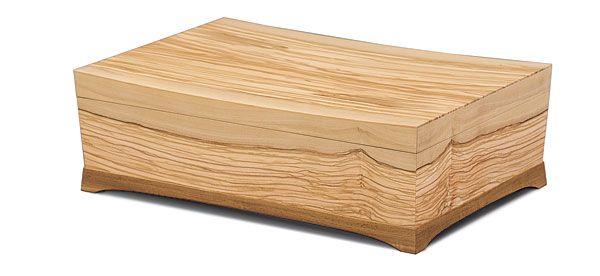
Woodworker: Mollie Ferguson
In the wood room at the College of the Redwoods, Ferguson found a plank of olive that would be perfect for the silverware chest (12 in. deep by 18 in. wide by 5-3⁄4 in. tall) she was planning to make for her mother. She liked the color and grain, which combined creamy sapwood with streaky, almost sedimentary heartwood. The plank wasn’t huge and it had some defects, so she conserved it by slicing it into veneers. She used teak to build the carcase, the base, and the trays inside.
To make the olive grain wrap around all four sides of the box and turn the corners seamlessly, Ferguson used two consecutive slices of veneer-one for the front and left end, the other for the back and right end, staggering the crosscuts. She managed the layout so the horizontal seam for the lid would fall entirely in sapwood, leaving the striated heartwood undisturbed.
On the top, which she dished slightly from end to end to echo the long curves in the grain, Ferguson bookmatched two straight-grained slices of veneer, placing the sapwood so it carried over the front and back of the chest. Because bookmatched pieces can reflect light differently, creating a lightand- dark effect, Ferguson flipped one piece of veneer end for end so both pieces had the same face up, ensuring a consistent appearance in any light. She used ApplePly as a substrate for the lid and created the slight saddle with a coopering plane. She veneered the underside of the lid with teak. In a final homage to the grain pattern, Ferguson dispensed with a handle.
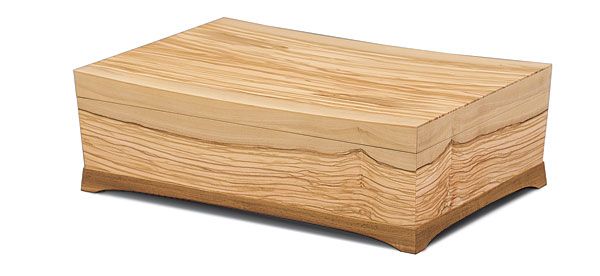
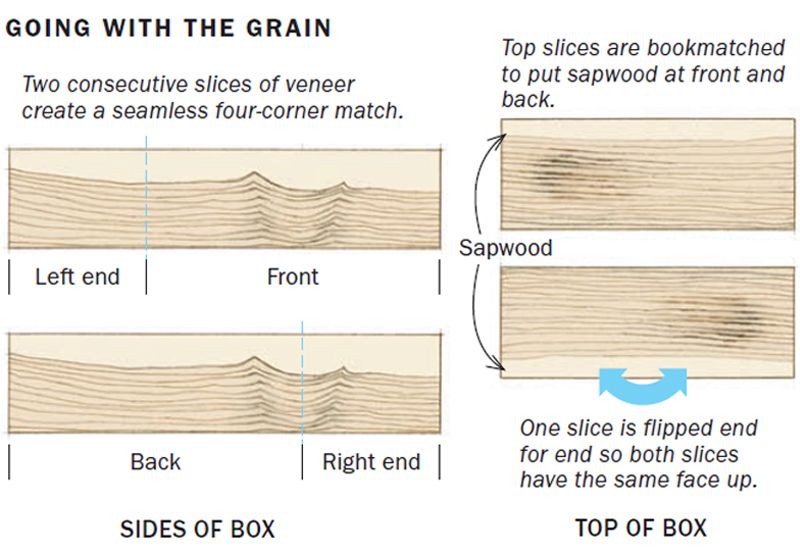



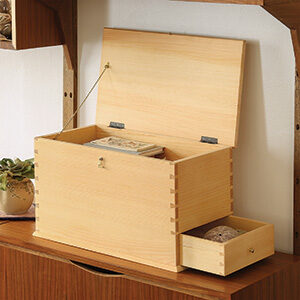
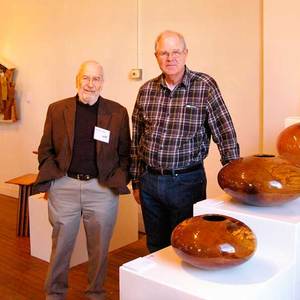
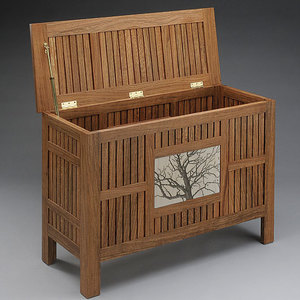












Comments
simply beautiful
I think your choice of veneer is outstanding. It looks so natural as if it were made from a solid block of wood. I also like the style of base. Very elegant!
Elegant in its simplicity and execution. Well done!
So beautiful
Log in or create an account to post a comment.
Sign up Log in